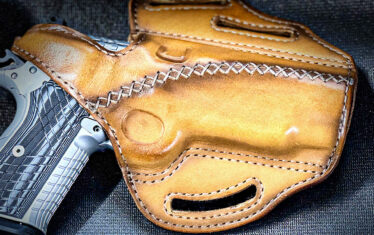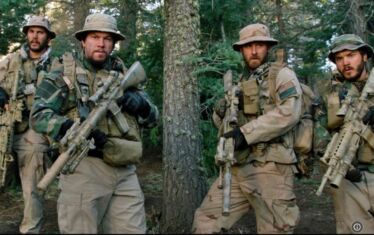Thanks to Clint Eastwood, there are probably millions who know — or at least believe — that the .44 magnum is the most powerful handgun around. As San Francisco police detective “Dirty” Harry Callahan, Eastwood remains infamous for stating, “Do you feel lucky, punk?”
That line has appeared on countless posters and t-shirts over the past 53 years.
However, for the record, Eastwood actually stared down a wounded bank robber in the 1971 film Dirty Harry and stated, “Uh uh. I know what you’re thinking. ‘Did he fire six shots or only five?’
Well to tell you the truth in all this excitement I kinda lost track, myself. But being this is a .44 Magnum, the most powerful handgun in the world and would blow your head clean off, you’ve gotta ask yourself one question: ‘Do I feel lucky?’ Well, do ya, punk?”
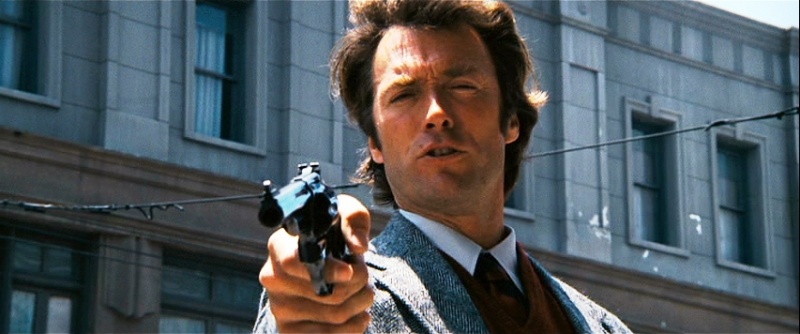
From that moment on, the .44 Magnum was legendary — even if it was no longer the most powerful handgun at that point, as it had been eclipsed in power by the .454 Casull. In the years since, other even more powerful cartridges have been introduced, but the .44 Magnum remains a pop culture icon.
Noted movie soundtrack composer Bernard Herrmann even included a track titled “The .44 Magnum is a Monster” for the score for 1976’s “Taxi Driver” starring Robert De Niro — and that was years before hip hop artists would rap about the Mac-10 and AK-47!
Yet, it is questionable whether the fictional Harry Callahan or the real-life Bernard Herrmann ever knew the name Elmer Keith, a man who was infamously described as being bigger than life, and as one who “should have died in a gunfight, or have been mauled by a grizzly.”
Neither happened and instead, Keith died in his mid-80s two years after suffering a de-habilitating stroke. It wasn’t the end fit for such a man — one who was known for his oversized Stetson hats, his love of cigars and hunting, and most importantly as the father of big-bore handgunning.
Born Too Late
Elmer Keith was born at the end of the frontier period, on March 8, 1899. It could be argued he was a generation too late, and had he been born a little earlier he might have been as legendary as Samuel Colt or John Browning. But according to an often-told story, he grew up listening to the stories of Civil War veterans and gunfighters, and was even taught to shoot by a former gunfighter turned barber.
He didn’t travel the world, nor did have any legendary adventures.
Yet, before his 13th birthday, he was in a terrible hotel fire in Missoula, Montana, and carried the scars for the rest of his life. The fact that he even lived was a minor miracle and it wasn’t expected that he would see his 21st birthday. So bad were the burns that his father considered sending him away to school so the young ladies wouldn’t cringe at his appearance.
Through sheer determination and perhaps just being tough to the core, Keith managed to overcome his injuries, including his badly deformed hand and over time he was able to rope steer and shoot pistols.
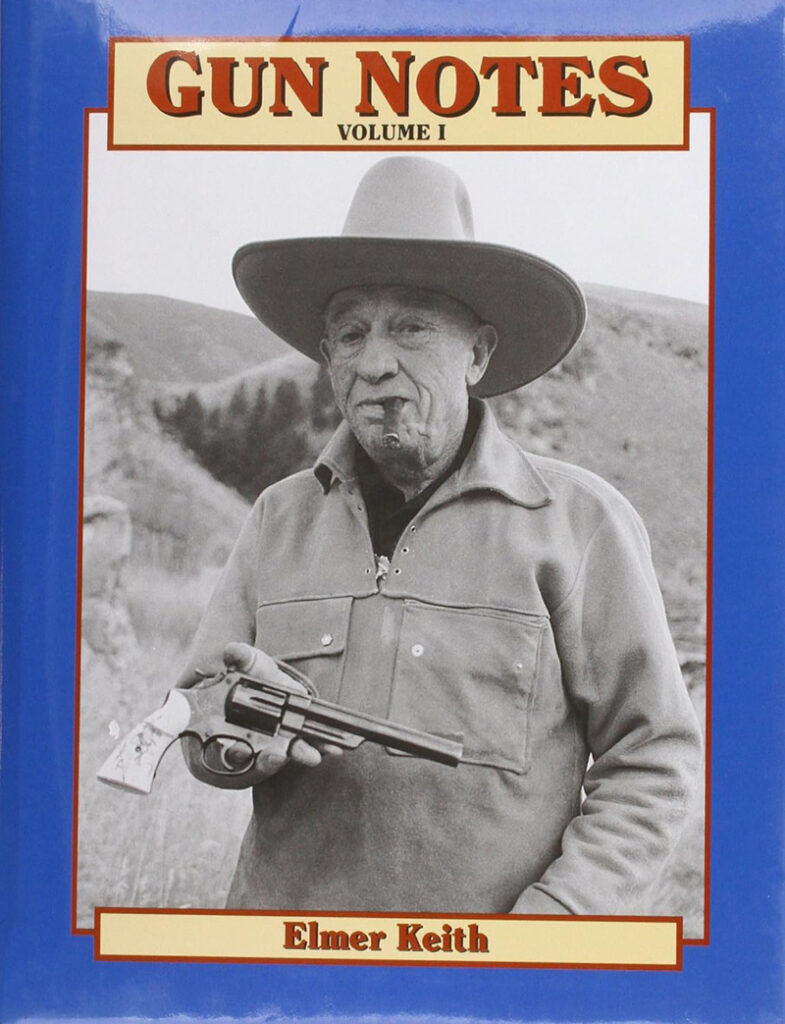
A Firearms Enthusiast
Though he had a passion for firearms, Keith wasn’t a tinkerer like the aforementioned John Browning. He technically wasn’t even a gunsmith or firearms designer.
Instead, his entry into the firearms industry reportedly began with a letter to the NRA’s American Rifleman in August 1924 or 1925 (sources vary on the exact year). From those truly humble beginnings, however, Keith would go on to become one of the prolific firearm writers of the 20th century — and perhaps ever. In his countless articles and columns, he made clear that he favored “sixguns” over autoloaders.
Throughout the 1920s and 1930s, Elmer Keith was a rancher and big game guide in Idaho and Oregon and began writing articles on the firearms of the day. Throughout his nearly six-decade-long career, he served on the staff of The Outdoorsman, The American Rifleman, Western Sportsman, Guns, and Guns and Ammo. He also wrote 10 books including his autobiography “Hell, I Was There!”

Had it just been for his writings, Keith would still be an important figure in firearms history — but as a man who was as truly larger than life, left a far bigger mark. He is remembered today as one of the earliest advocates of handgunning, as in using handguns for hunting. He often hunted with his double-action Smith & Wesson revolvers.
Keith was also a firearms “wildcatter” who sought to push the limits of existing cartridges, driving large bullets at increasingly higher velocities.
Enter the .357 Magnum
Keith may not have been a tinkerer, yet as a wildcat, he is credited with the early development of the .357 Magnum cartridge after experimenting with loading the .38 Special to increasingly higher pressure levels. Such a move could be seen as potentially dangerous, but it was possible thanks to the availability of heavy, target-shooting-oriented revolvers — notably the .38-caliber revolvers built on .44-caliber frames.
The frame, cylinder, and barrel of these revolvers were much stronger than the standard .38 Special components and were capable of withstanding much higher pressures.
Douglas B. Wesson, the grandson of Smith & Wesson co-founder Daniel B. Wesson, led an effort within Smith & Wesson — with considerable technical assistance from Phillip B. Sharpe — to bring the .357 Magnum to market as part of an attempt to reassert the firearms maker as the leading law-enforcement armament provider.
However, it presented some problems as the .357 Magnum cartridge generated far more pressure than the .38 Special revolvers could safely handle. As a result, the .357 Magnum was developed with a slightly longer case than the .38 Special. This allowed .357 Magnum revolvers to shoot .38 Special or .357 Magnum ammunition, while.38 Special revolvers could not chamber .357 Magnum ammunition.
Keith’s actual contributions to the commercial development of the .357 Magnum cartridge have been questioned in the decades that followed, yet his early experimentation can’t be overstated. Keith saw a need to create what wasn’t being offered commercially and the industry followed suit
Going Even Bigger
Even before the introduction of the .357 Magnum cartridge, Keith had been experimenting with heavier loads in the .44 Special — and he encouraged Smith & Wesson and Remington to produce a commercial version of the high-pressure load.
The industry stood up and listened.
Smith & Wesson went to produce a prototype revolver chambered for the .44 Magnum, which served as the basis for its famous Model 29 — the handgun carried by Dirty Harry on the big screen. However, it is worth noting that the film came out more than 15 years after the big-bore revolver was introduced, while it also made its cinematic debut in the 1967 film Point Blank when it was carried by Lee Marvin.
Noteworthy is the fact that the Sturm Ruger .44 Magnum version of the single-action Blackhawk revolver also beat the Model 29 to market. Yet, in the end, Clint Eastwood carried the Model 29 and the rest is history.
That wasn’t the end of the story, however.
Keith pushed for the development of the .41 Magnum cartridge in the 1960s, as an attempt to find a comfortable middle ground that offered more stopping power than the .357 but with less recoil and muzzle blast than the .44 Magnum. The .41 Magnum was also unique in that it employed a completely new case.
Improving the Heath Target Bullet
Elmer Keith was further responsible for a number of bullet designs that remain popular today. Beginning in the late 1920s, he drew inspiration from the bullet designed by C.E. Heath of the Boston Revolver Club as a target bullet for the .44 Russian cartridge. The Heath bullet built on the Himmelwright wadcutter, a bullet designed to cut clean, full-diameter holes in target paper.
Keith took the design even further with his semi-wadcutter (SWC) design, which featured a wider-than-normal front surface, and convex sides. Those changes increased the volume of the bullet outside the case and allowed more room inside the case, which was needed for large loads of slower-burning powders.
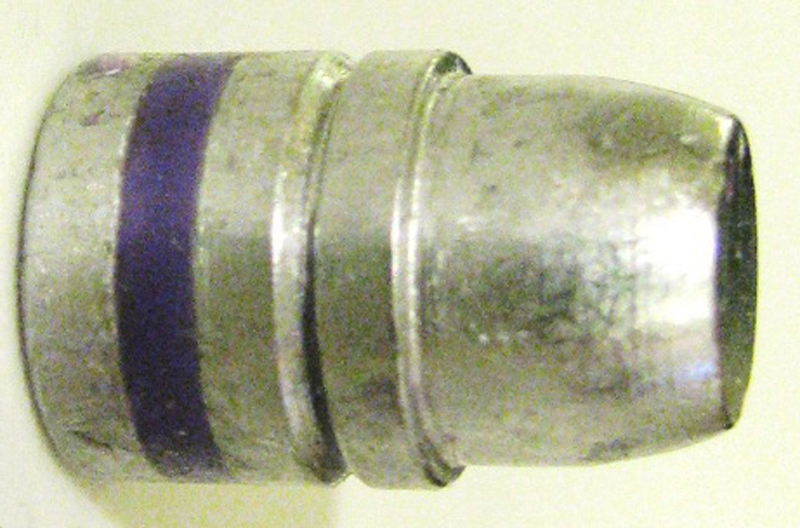
When shooting paper targets, the Keith-style bullets can cut a relatively clean hole in the target, yet provide more case volume and a better ballistic coefficient than a flat front wadcutter. Moreover, when employed for hunting, the heavy bullets provide excellent penetration.
A Family Man and More
Keith spent more than six decades shooting, hunting, serving as a guide and rancher, and of course writing about his passions. Despite suffering those serious burns early in life, Keith still managed to find true love and married Loraine Randall. The pair settled near Salmon, Idaho. During the Second World War, he served as an inspector at the Ogden, Utah Arsenal.
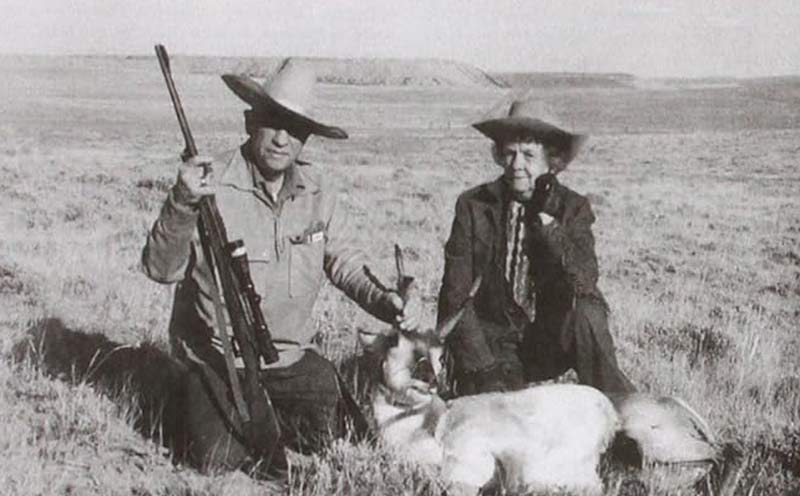
He was also a noted collector of firearms, and the James D. Julia auction house sold his substantial collection in March 2015. While it has been more than 40 years since Keith passed away, his legacy lives on with the big-bore handguns that he helped develop and further innovate.






